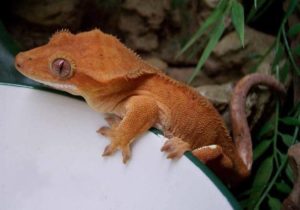
The scientific name of the Crested Gecko is Correlophus ciliatus.For Ciliatus and Sarasinorum, the name Correlophus has been in force since July 1, 2012.
The former name Rhacodactylus is still used for Leachianus (Giant Gecko), as well as 3 other subspecies.
Crested geckos are native to New Caledonia, close to Australia and the Fiji Islands, a tropical zone with a similar climate.
Crested geckos are ideal pet reptiles for beginners. They require only a few fairly simple requirements to meet. Because crested geckos are mainly arboreal, they live in suitable Terrariums.
They are among the most popular reptiles along with Leopard geckos.
In the wild, crested geckos usually lose their tails and are left with a tiny pointed tip. Taillessness” is common in adult crested geckos. In captivity, they are preferred with their tails, of course, but this requires keeping the animals individually to avoid tail loss for sure.
Sommaire
Size and weight of the Crested Gecko
Both male and female crested geckos reach an average length of 20 to 25 cm.Their tails account for almost 40% of their length.Males and females weigh between 30 and 50 grams.
Life expectancy and temperament of Crested Gecko
When properly cared for, the Crested Gecko can live from 15 to 25 years.
Wait 3 to 4 weeks after purchasing your Gecko before starting to handle it. They first need to adapt to their new environment and lifestyle.To begin with, when handling your Gecko, don’t take them for more than 10 minutes. Baby crested geckos are quite fragile and may injure themselves when handled, so be really gentle to avoid this. Wait until they are at least 8 cm long before handling them.
Good to know : Geckos rarely bite, and if they do, you’ll hardly feel a thing.
What does a Crested Gecko eat?
The Gecko’s diet is made up of 75% fruit and 25% insects for most breeders.
Some choose to offer insects as their main diet, it’s just as possible.
Crickets/cricket currently sold commercially are an excellent choice as long as they don’t exceed the size of your Gecko’s head. Crickets should be lightly coated with a vitamin and/or mineral supplement containing calcium, vitamin D3 and a complement of other essential vitamins and minerals. Above all, they should be alive.
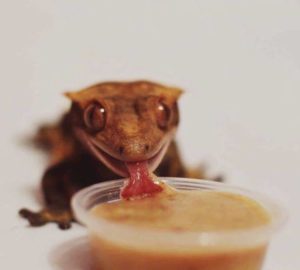 If the diet is mainly insects: Offer them one or two crickets sprinkled with calcium 3 times a week, once with B3. And fruit purée once a week.
If the diet is mainly insects: Offer them one or two crickets sprinkled with calcium 3 times a week, once with B3. And fruit purée once a week.- If the diet consists mainly of fruit: Offer them a sprinkled cricket twice a week and fruit purée 3 times a week.
Prefer homemade purée, as commercial compotes are very sweet and full of preservatives. Or opt for the following second super-efficient nutrition solution :
The all-in-one meal by Repashy
There is a type of meal in powder form marketed as “REPASHI SUPERFOOD “. It’s a super-efficient concentrated meal replacement made up mostly of fruit.
It rules out the need to feed them live insects, although many combine the two. Crested geckos fed exclusively on this diet are just as fit!
On a personal note, it’s a great alternative, and really makes things easier, especially for beginners!
This type of substitute meal has been tested with thousands of geckos for over 10 years. Mix one portion of powder with 2 times its equivalent in water, and stir.
The mixture may seem very liquid at first, but it will thicken after a few minutes, mix well.
You can use less water if necessary. Feed the geckos in the evening and remove the contents of the bowl within 36 hours of feeding.
Crested Gecko Terrarium: How to choose
Crested gecko terrarium dimensions
For a single Crested Gecko, choose a terrarium of dimension 45x45x60 (Length / width / height) ideally made of glass and supporting humidity.
Male Crested Geckos can fight, even kill each other -> Don’t put them in the same Terrarium!
We apply the famous rule: 1 reptile = 1 terrarium.
To avoid exhausting the females, don’t put them alone together either (male and female). Do so only during the mating period. (See mating section below)
You can, however, put several females together on an exceptional temporary basis. In this case, opt for a 60x45x90cm terrarium for 2 individuals (maximum 2, and it’s not recommended).
Which substrate to choose for a Crested Gecko?
Crested geckos spend most of their time above ground, which means they can use a lot of substrate. A mixture of peat and moss is a good example of a substrate for them. Terra Coco (sold as compact bricks) is ideal and has a more natural look.Mixed with soil it’s also great for growing live plants.If you’re looking to run out of substrate, wiping it all down can also be a temporary solution for you.
Geckos like to glean from foliage and climb branches. You can decorate your terrarium with dry branches angled along the length of a vivarium. These provide activity and resting areas for your Crested Gecko.Plants (living or not) give your Gecko a sense of security and relaxation.
Decorate, but not too much! They still need space.
Heat, humidity and lighting for a Crested Gecko
What temperature for a Crested Gecko?
Reptiles are ectotherms (body temperature varies according to ambient temperature). So it’s important to provide the right temperature range for activity and feeding. A digital thermometer is essential for accurate temperature measurement.
For Crested Gecko, daytime temperatures should be around 21-22°C. At night, during their active period, terrarium temperatures should be around 19-20°C. Most of the time, room temperature is sufficient.
We recommend using a low-wattage incandescent or ceramic bulb to reach these temperatures if this is not the case. Place your heat source in an elevated corner of the Terrarium, so as to reach the desired temperature. You can also use a heating pad or cable, but this is less recommended.
Whatever the method, you absolutely must check the temperature with an accurate thermometer!
UVA and UVB in the Crested Gecko
If your vivarium contains live plants, you can equip it with a fluorescent lamp. Crested gecko often rest in foliage or shelters during the day. This is their resting period. They don’t need UVB light if fed a diet containing sufficient vitamin D3.
If this is not the case, equip your terrarium with a 5% UVB lamp. (You can leave a 5% UV lamp on for 12 hours, during the day only, in the terrarium).
Turn off all lights at night.
Hygrometry for a Crested Gecko
Always leave a bowl of fresh water available in the terrarium for your Gecko. Geckos require a humidity level of 60-80%. You can lightly mist (or schedule a misting) at night and in the morning, when humidity should be at its peak. A cold-air humidifier works well, but be sure to check the temperature rendered. To calculate the humidity level, use a quality digital hygrometer that’s more accurate than a needle-type one.
Reproduction and incubation of the Crested Gecko
Reproduction and Mating of the Crested Gecko
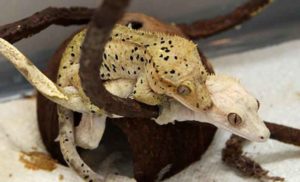
La période de reproduction est au printemps, entre avril et juillet.
To set up this process, place a male and a female gecko in the same Terrarium. They will mate for around 15 to 20 minutes.
You can let them do it 3 to 4 times, females can store up their partner’s sperm. Once this is done, separate them and return them to their respective Terrarium. The male may want to repeat the action until the female is exhausted.
During the act, you’ll notice that the males climb onto the females and bite them on the nape of the neck to keep them still. You may hear a few cries from the females, but nothing serious. This is quite common and completely normal.
How does Crested Gecko egg incubation work?
After mating, this is the gestation period. This lasts between 3 and 4 weeks, after which the female will lay her eggs, usually two in number. Slightly increase calcium doses to fortify the eggs during this period.
Females prefer to lay their eggs in a relatively moist substrate, and vermiculite is ideal. Keep an area of the terrarium with this vermiculite or damp earth as substrate. This can be a small plastic box a few centimeters deep for the female to bury her eggs in, but this area must be easily accessible!
Keep in mind that the area should be more humid (80%) than the rest of the terrarium but not soaking wet.
Once the eggs have been laid, dig them up extremely carefully and above all without turning them over, as this would be fatal to them. Then place them in a box, filled with 3 to 4 centimetres of moist substrate. You can use several different incubation substrates: vermiculite, perlite, peat or peat moss. Use your finger to make small holes in the substrate, depending on the number of eggs. Do this so that the eggs are half “pushed in” and above all, don’t move. Then place the box in your incubator.
Which incubator to choose?
It’sadvisable to buy a good-quality incubator rather than building one “in-house”.
Because even one small setting error or clumsiness could be fatal to newborns.
Here are the 3 best incubators for reptile egg incubation:
Info : I personally recommend this Incubator, which is reliable and includes little boxes for depositing substrate and eggs.
Incubation will last between 60 and 90 days depending on temperature, but take care not to exceed those recommended.
Incubation temperature and humidity
It can be found between 21°C and 26°C,but it must remain constant.
According to many sources, temperature has no particular influence on sex at birth. The higher the temperature, (but no higher than 26°C!) the faster the eggs will hatch. Note that the longer the incubation period, the “bigger” your Gecko will be, so don’t necessarily speed it up. Hygrometry (humidity) should be between 80 and 90%.
To measure the latter effectively, it is essential to provide yourself with a high-quality digital hygrometer.
Caring for Baby Geckos
At birth, when the crested Gecko babies come out, you’ll need to put them in a faunabox. Each newborn should have its own faunabox to avoid any confrontations. Use paper towel as a “substrate” for your boxes, it’s an ideal surface for baby Geckos. Spray warm/cold water on the walls of the Faunabox so they can quench their thirst.
After 2 days, start feeding them with :
– Very small crickets (fed twice a week)
– A capful of fruit purée (always available, but no citrus fruit)
Be sure to give them a slightly higher calcium intake than older Geckos. You’ll keep them here for around 3 to 4 months, alone, at the same temperature as an adult Crested Gecko.
Buy a Crested Gecko
Where can I find a crested gecko ?
Crested geckos were once considered among the rarest lizards in captivity. Today, they are bred in large numbers and are well known in the new pet industry. You can now find them in any pet shop selling reptiles, including specialized online pet shops.
All about the Gecko
I urge you to buy the book “Crested Gecko Pet Owners Guide” by Ben Team, which details absolutely everything about the Gecko. An essential compendium for beginners as well as experienced breeders.

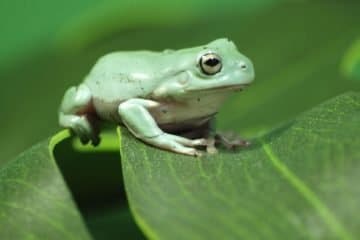
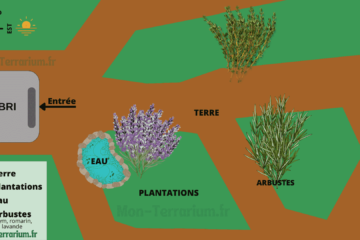
0 Comments